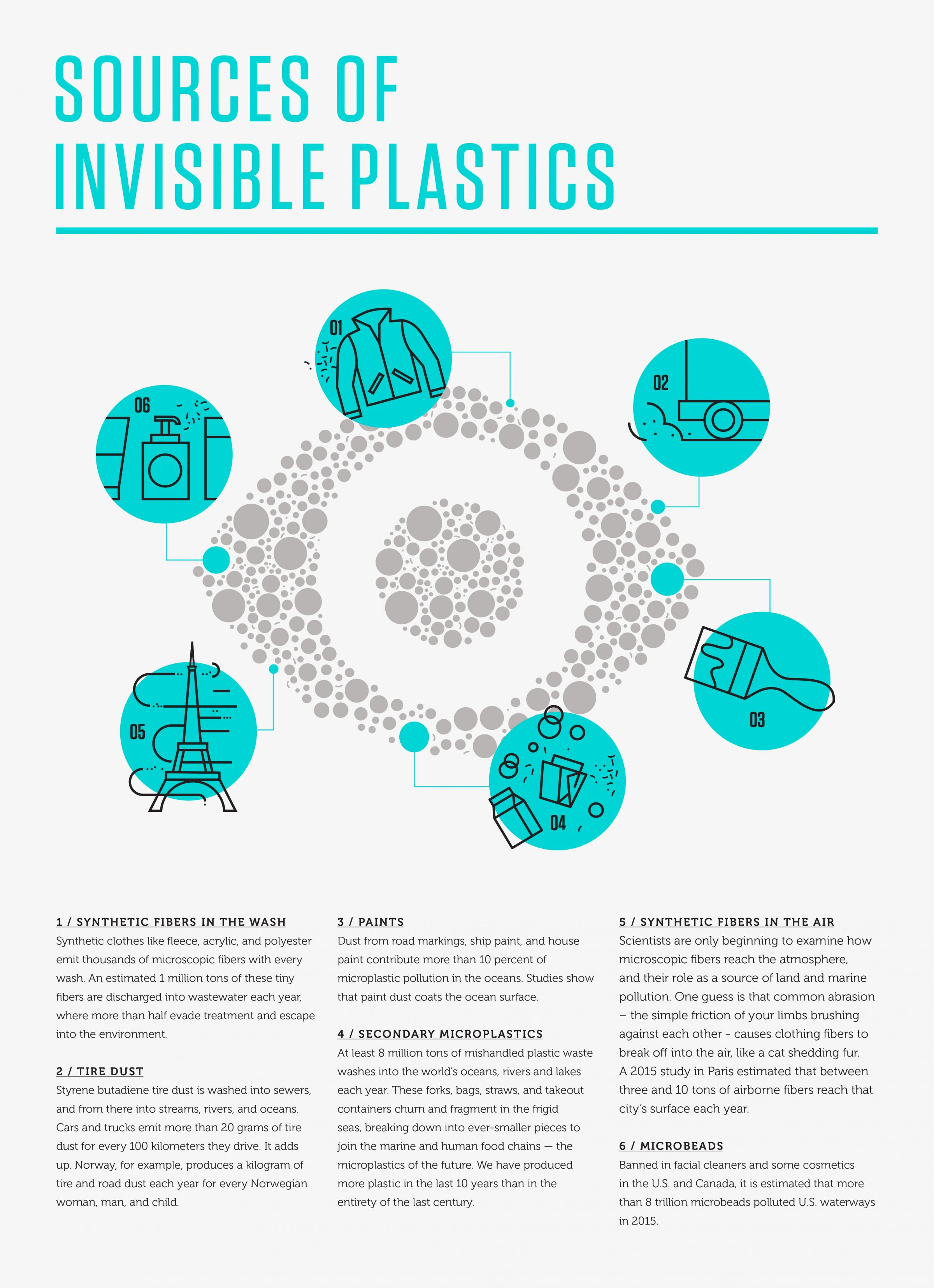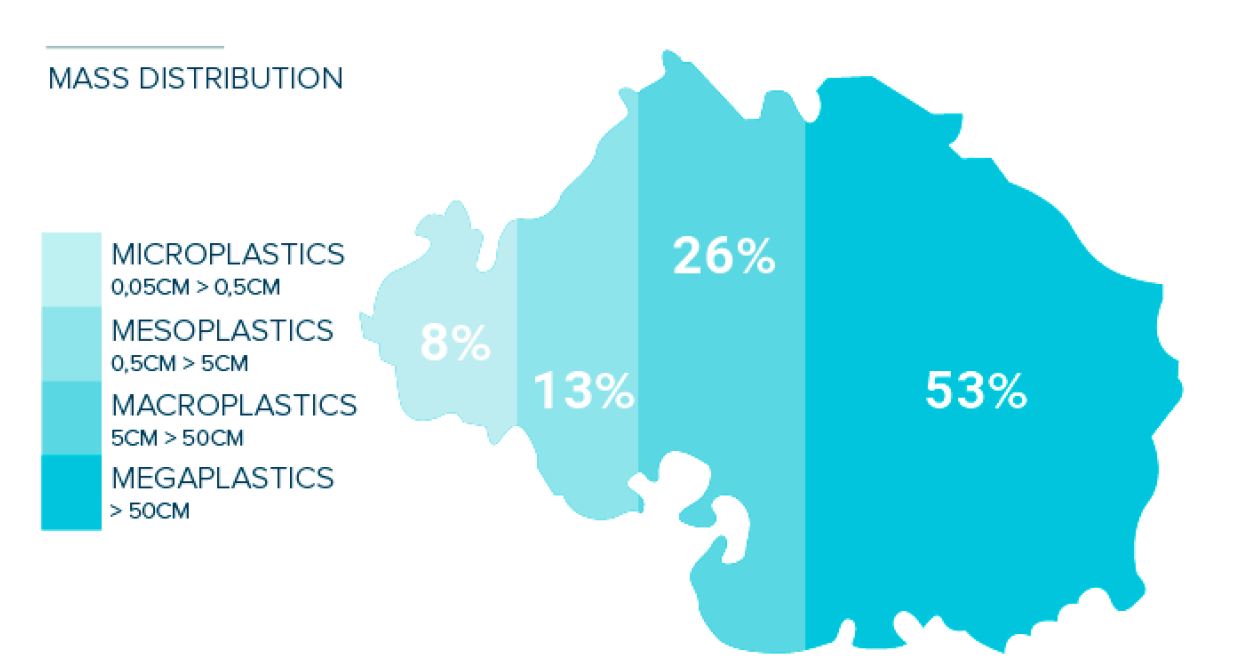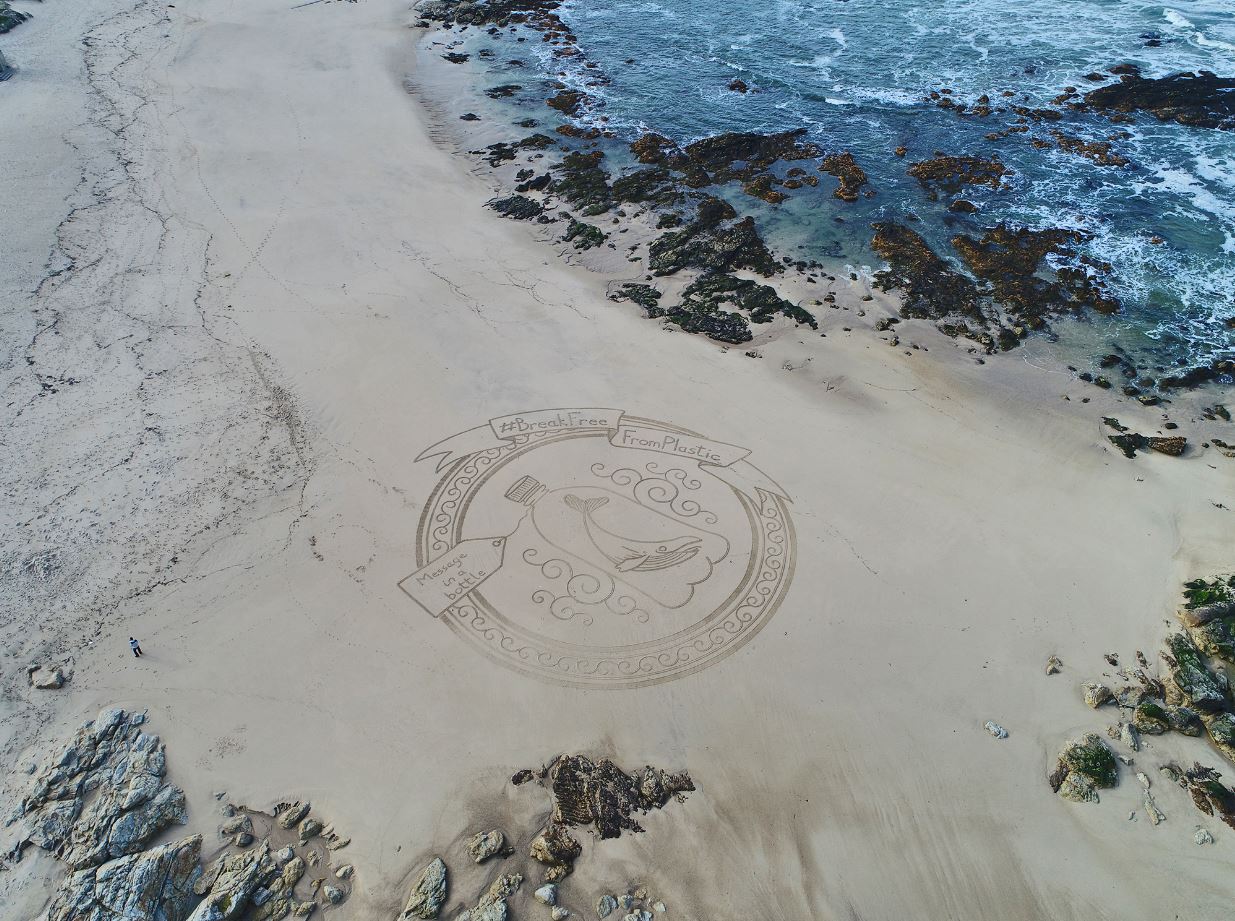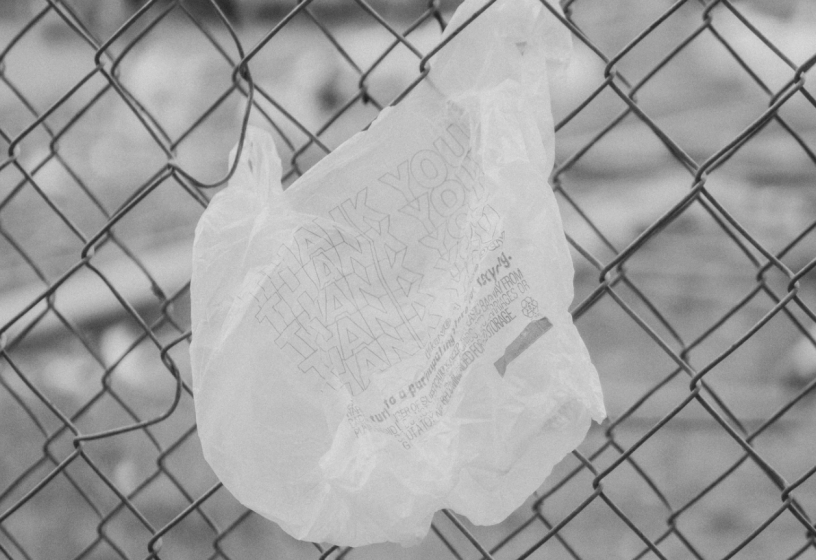A Hazardous Immersion

Plastic, this wonderful invention of humankind that facilitates our everyday life turns out to be a ticking time bomb. Its exponential production leads to lands, and even continents of waste; as plastic is everything but biodegradable. Worse, with time, molecules break down into smaller particles which are spread into the air we breathe, the food we eat and the water we drink. However, solutions do exist to avoid an uncontrollable situation. A true race against time in a world of plastic.
From our lunch box to the plastic bag of our last supermarket's trip, plastic has become our new best friend, making our life far easier. In 70 years the material’s world production has literally exploded, passing from 2 million metric tons (Mt) in 1950 to 380 Mt in 2015, namely a compound annual growth rate (GACR) of 8.4% . Last year, a team of scientists (Roland Geyer, Jenna R. Jambeck and Kara Lavender Law) have led the first global analysis of all mass-produced plastics. Since the 1950s, 9 billion tons of plastic have been produced. The study points out the packaging sector as the biggest producer of plastic on earth, accounting for over 30% of the global plastic production (see figure 1).
What fate for plastic?
From the accumulation of produced waste all around the world between 1950 and 2015 (i.e. 5800 Mt), the three scientists estimated that approximately 12% have been incinerated (with or without energy recovery), only 9 % have been recycled (of which 10% have been recycled more than once). The rest (i.e. 79%) is currently accumulated in sanitary landfills or left uncontained in open dumps or in the natural environment. Although insufficient in light of the current crisis, efforts are underway in several countries. Luxembourg is one of the ten European states which have implemented minimum plastic waste recycling rates (22.5%). This allowed the Grand-Duchy to improve, rising from 6.2% in 1997 to 32.5% in 2016 (see figure 2). In Europe, the post-consumer plastic waste recycling rate is above the world average but still considerably lagging behind when compared to other materials.
Far more than a new continent
4.8 to 12.7 Mt of plastic waste end up in the ocean each year. According to the Ellen MacArthur Foundation, this quantity is equivalent to dumping the contents of one garbage truck into the ocean every minute. If nothing is done to improve the waste management infrastructure, this is expected to increase to two per minute by 2030 and four per minute by 2050. “It never decomposes and will remain there forever. If nothing changes, by 2050 all the plastic in the ocean could weigh more than all the fish”, warns Sky Ocean Rescue.
Marine currents carry plastic and concentrate them in specific subtropical gyres, often described as the ocean’s garbage patches. There are five of them. The sadly most infamous one, the Great Pacific Garbage Patch, was discovered in 1997 by the oceanographer and skipper Charles J. Moore. Since its finding, this area has tripled and represents today a surface equivalent to a third of Europe and can be as deep as 30 meters.
“Once in these patches, the plastic will not go away by itself. The challenge of cleaning up the gyres is that the plastic pollution spreads across millions of square kilometers and travels in all directions” testifies The Ocean Clean Up organisation.
It is actually a race against time as a large portion of plastics still have sufficient dimensions but are getting smaller, invisible even and more hazardous. « By removing the plastic while most of it is still large, we prevent it from breaking down into dangerous microplastics.” Explains The Ocean Clean Up.
Overall, Roland Geyer and his team sound the alarm. “Without a well-designed and tailor-made management strategy for end-of-life plastics, humans are conducting a singular uncontrolled experiment on a global scale, in which billions of metric tons of material will accumulate across all major terrestrial and aquatic ecosystems on the planet."

Environment threatened by multiple hazards
At all stages of its lifecycle, plastic has negative effects on the environment and biodiversity. Firstly, it is mainly produced from fossil fuels, and its production process involves the use of chemicals. In fact, plastics have an important carbon footprint with emissions amounting to nearly 400 million tons of GHG a year at a global scale (European Commission) .
Once produced, the characteristics that make plastic so resistible and imperishable, are also a cause for its downsides. Plastic cannot biodegrade, mostly leaks into the environment and sticks around for hundreds of years with major impacts on biodiversity.
We all have seen the shocking photographs of seabirds, marine mammals and turtles trapped in plastic waste. However, sea creatures are not just harmed by physical entanglement. Researchers at The Ocean Clean Up found out that the analysed turtle’s stomachs contained 63% of plastic and only 37% of food! A phenomenon that gets worse with the plastics fragmenting into small particles.
The invasion of microplastics
Once exposed to the elements of nature, plastics break down into small fragments. These so-called “microplastics” are then ingested by plankton, mussels, fish… and hence end up in our food chain and on our plates. A study by the University of Ghent has discovered the existence of 300 microparticles of plastic per 300 gram portion of mussels.

Worse, it goes far beyond ocean life! A recent water study has found that 83 % of tap water samples tested worldwide contained plastic fibers and 72% in Europe (Chris Tyree, Dan Morrison, Orb, 2017). Bottled water seems contaminated too, according to the department of Geology & Environmental Sciences at the State University of New York at Fredonia. Their latest study highlights that 93% of tested bottled water showed some signs of synthetic polymer contamination, reaching in some cases over 10,000 microplastic particles per litre.
It is in the food we eat, in the water we drink, even in the cosmetics we use and in the air we breathe. Indeed, tire dust is an important source of microparticles emissions (see opposite) and it has been found that plastics contained in our sports clothes or fleece jackets are released in the air through friction or in the water cycle when being washed. Such findings also call for extra vigilance in the design of circular loops and recycled products.

Art by beach artist J.Ben in the framework of Earth Day 2018.
A European strategy for plastics in a Circular Economy
The European Commission has identified plastic as a key priority in its action plan and presented its “strategy for plastics in a circular economy” earlier this year. The Commission worked on a list of measures, including a regulatory framework for single-use plastics and plastics with biodegradable properties: examination of policy options for reducing unintentional release of microplastics from tires, textiles and paint; and a reduction of plastic bags usage in Member states. Moreover, the Commission wants to drive investment and innovation towards circular solutions, and undertake actions to tackle the sources of marine litter. Companies and industry associations are encouraged to submit their pledges on how to boost the uptake of recycled plastics. As the Commission states, the objective is to ensure that by 2025 ten million tons of recycled plastics find their way into new products on the EU market.
Today, about 25 million tons of plastic are consumed each year by the EU member states and only 30% of this amount is recycled. Ireland is the most important producer of plastic, along this Estonia and Germany.
The concern is growing at national levels and some efforts are underway. At the end of March, the United Kingdom has announced its will to implement a bottle return scheme, as this kind of system already is up and running in Sweden, Denmark, Germany and Belgium. Moreover, the United Kingdom is also planning to ban the use of straws, swizzle sticks and cotton dub. In France, although an amendment to ban plastics in canteens has been refused, local authorities will have the right to conduct an experiment without plastic if they wish. These are some positive first steps to coping with the magnitude and emergency of the plastic issue.
tons of plastic have been produced since the 1950s
of plastic waste produced ended up recycled
the equivalent of 1 garbage truck is dumped into the ocean every minute
plastic bags are used worldwide annually
plastic bottles are bought around the world every minute
plastic bottles are produced by humans every second, 3,400 of them are Coca-Cola bottles
Also to be read in the dossier "Plastic Age":





